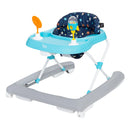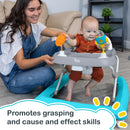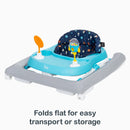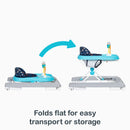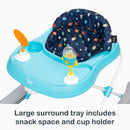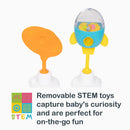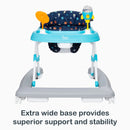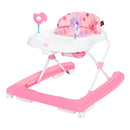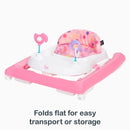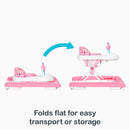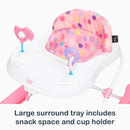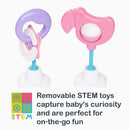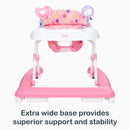Product Details
Download Product Instruction Manual
Features
- Removable STEM toys can be taken on the go.
- Large surround tray includes snack space and cup holder.
- Height adjusts to 3 positions.
- Folds flat for transport and storage.
- Extra wide base provides superior support and stability.
- Promotes core strength building, grasping and reaching and cause and effect skills.
Description
The Smart Steps® Trend Activity Walker is the perfect accessory as your child prepares to take their first steps. Removable STEM-based toys attached to the tray can be easily removed and taken on-the-go. This walker promotes core strength building, grasping and reaching, and cause and effect skills. The deluxe toy console encourages playtime and will keep your baby entertained while in use.
The multi-directional wheels provide freedom of movement and the extra wide base provides superior support and stability so your baby can be confident as they navigate new terrain. The large surround tray provides plenty of space for snacks and play. This activity walker also features a 3-position height adjustable frame. For easy transportation and storage, this product offers a flat fold.
Recommended Use
- This walker is to be used only by infants, who are old enough to sit upright on their own and are ready to learn to walk (about 6 months old).
- Discontinue using the walker when the child can walk unassisted, reaches 30 lb in weight, or reaches 32" in height.
Technical Details
- Product dimensions: 23.5" x 27" x 20.5"
- Product dimensions folded: 23.5" x 27" x 9.5"
- Maximum weight recommendation: 30 lb
- Maximum height recommendation: 32"
- Materials:
- 100% polyurethane foam
- View law label
- Number of items: 1
- Batteries required: No
- Item weight: 6.2 lb

















